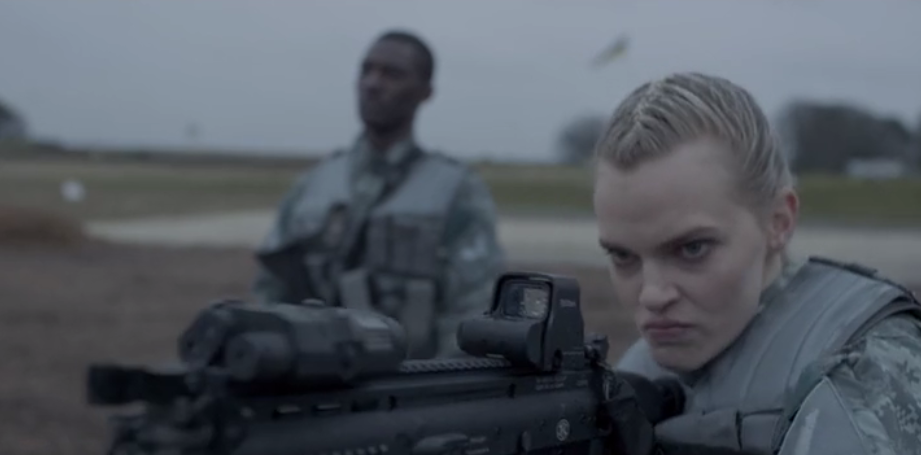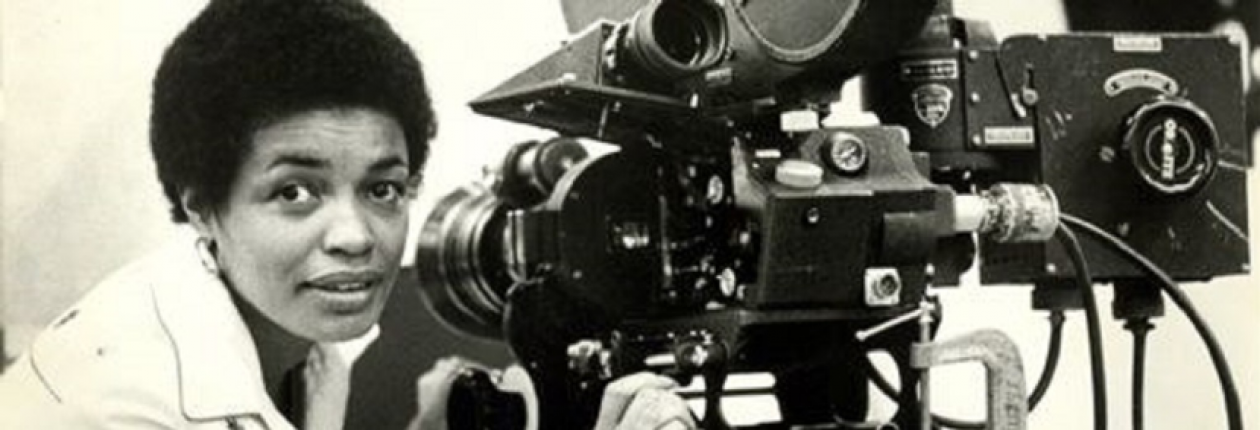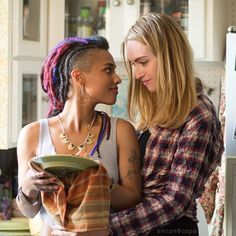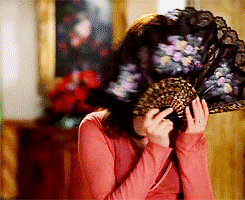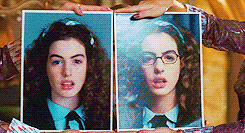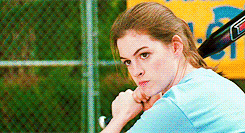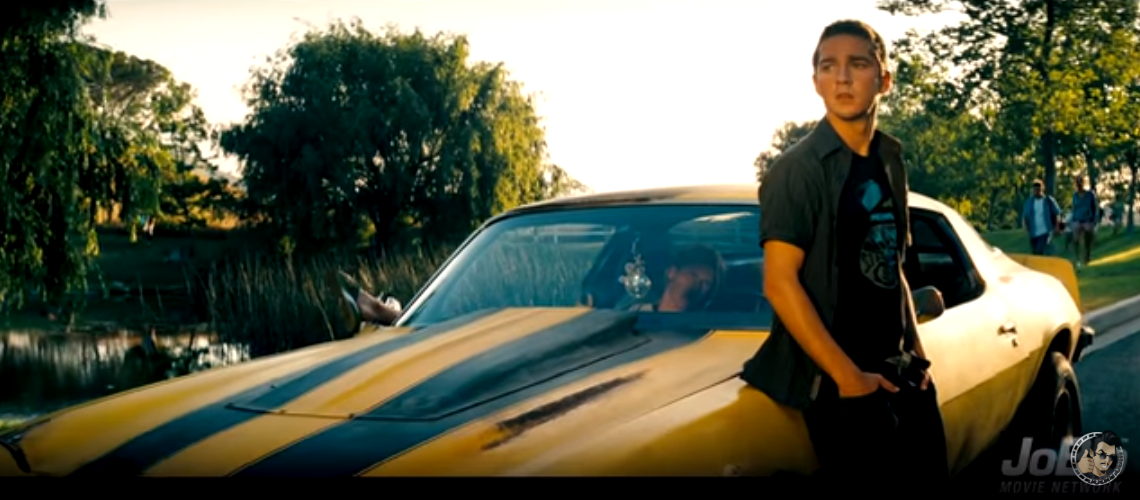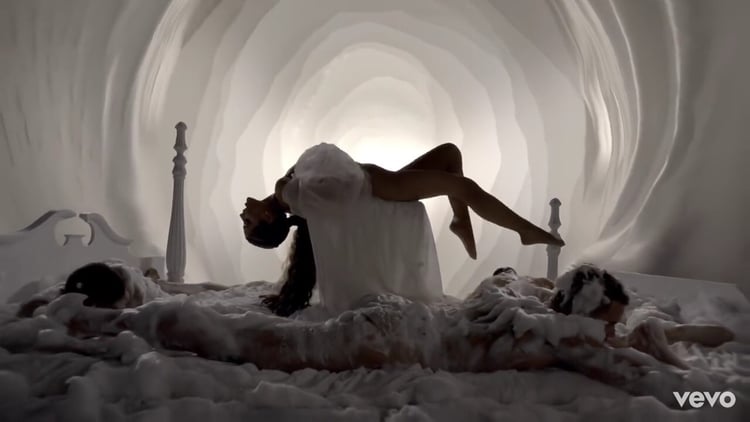Media Example: Sexuality and Agency: “ Barbarella” with Jane Fonda vs Gillian Anderson in “ The Fall” by Nancy Neidt
The portrayal of woman as sexual beings has often focused on their sexuality as a function of the male gaze, a form of fantasy that leads to erotic spectacle. “ In a world ordered by sexual imbalance, pleasure in looking has been split between active/male and passive female. The determining male gaze projects its fantasy onto the female figure, which is styled accordingly. In their traditional exhibitionist role woman are simultaneously looked and displayed, with their appearance coded for strong visual and erotic impact so that they can be said to connote to-be-looked-at-ness. Women displayed as sexual objects is the leitmotif of erotic spectacle…” Mulvay, 1990, p. 33.) Jane Fonda in the 1970’s science fiction movie “ Barbarella” is a classic example of the erotic spectacle, starting with her first scene stripping as she enters a space ship. The space ship is taking her to a planet where there are machines that provide pleasure, and sex is done physically, the old fashion way.
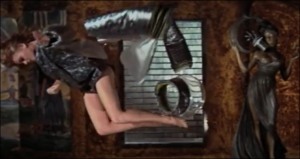
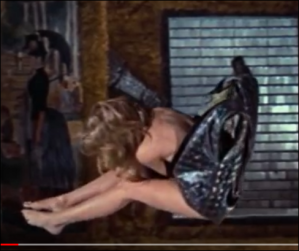
However, Barbarella comes from a planet in which sex is no longer a physical act, but is evoked with pills. During her adventures on the planet, she meets a male who wishes to try the pills, but she prefers this new found physicality.

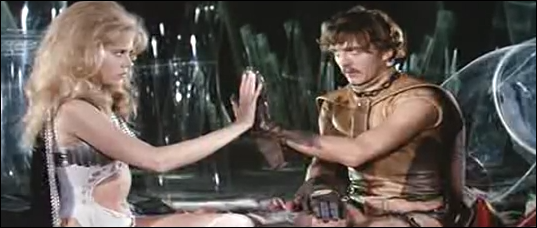
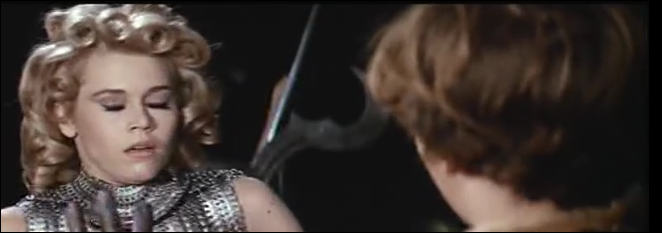
However, DiIdano, the space man prevails, and they have sex using the pills, with some interesting results.
Dildano takes a bit longer in his sexual climax, while Barbarella forgets where they are, and smooths out her hair. She notices he continues and finishes the process to bring mutuality.
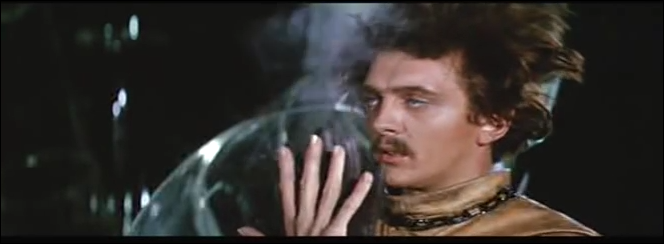
However, in her quest for the space man who created a weapon that has the possibility of altering history, she is captured and forced to endure another form of sex, via a machine called the Organsimatron, or the Excessive. “ The mass of mainstream film….portray(s) a hermetically sealed world which unwinds magically, indifferent to the presence of the audience, producing for them a sense of separation and playing on their voyeuristic fantasy’” Mulvay, 1990,( p.31). In these scenes, Barbarella is the epitome of the classic male fantasy, until…..
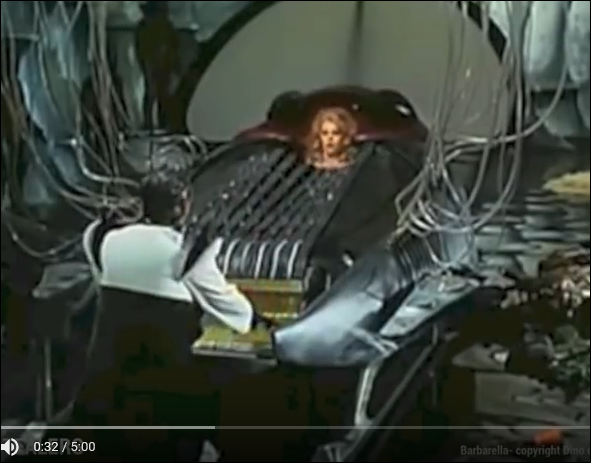
Barbarella creates a Hard stop in the story line, finding the Orgasmatron pleasant, and eventually breaks the machine without intending to, due to her infinite capacity for orgasm; much to the chagrin of her torturer. 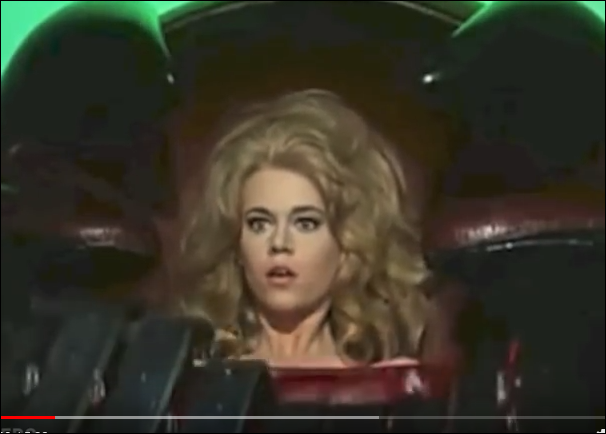
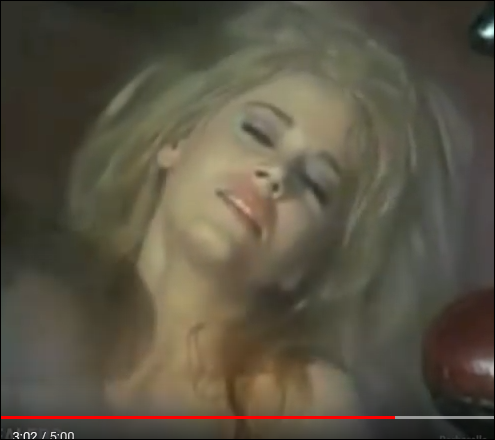
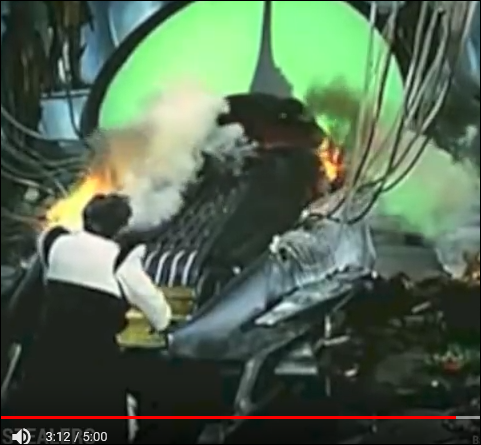

Orgasmatron Crashing
“ The presence of women is an indispensable element of spectacle in normal narrative film, yet her visual presence tends to work against the development of the story line, to freeze the flow of action in moments of erotic contemplation. This alien presence then has to be integrated into cohesion with the narrative.” Mulvay, 1990, p. 33)
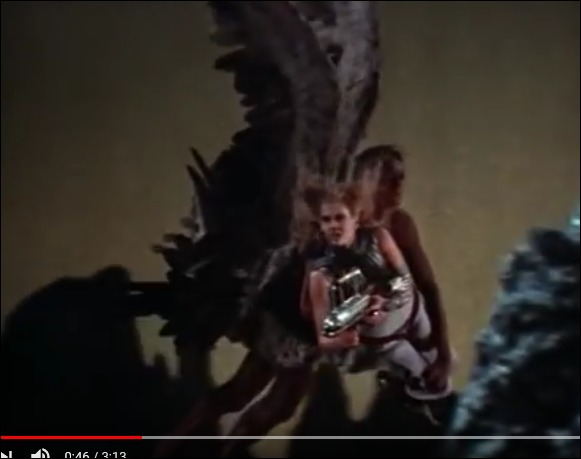
Barbarella and revived angel
However, is not only an object, but also bigins showing agency. Barbarella meets an angel who can no longer fly. She is able to bring the story back to the original narrative, her search for the creater of the weapon that can alter the future. She restores the Angel’s flying power by having sex with him, and the mission is continued as they search for and eventually find the creator of the weapon, who ends up being the man who attempted to torture her with the Orgasmatron. Barbarella’s journey in some senses paralells the journey of feminism, with the sexual revolution, and the beginnings of agency and a sense of identity among women.
As a counterpart, Gillian Anderson, in the tv series “ The Fall” is a modern day intelligent detective tracking down a serial killer. Throughout the majority of the three seasons, she is portrayed as an authorative professional. But she also is a woman with agency when it comes to her sexuality, chosing the men she wishes to have sex with, and basically keeping these encounters in the background, as she does her more important work of finding a serial killer.
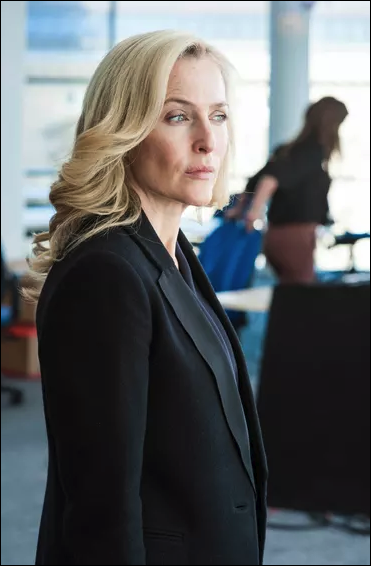


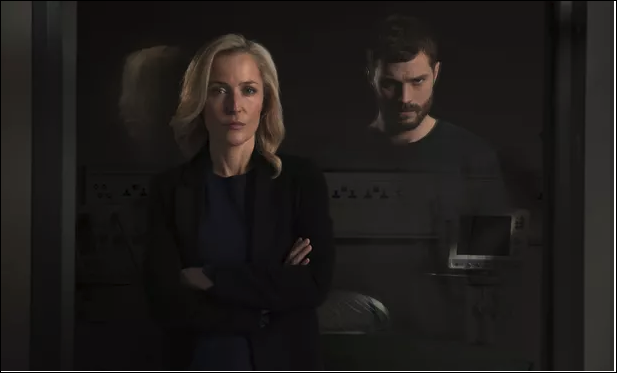
Stella and serial killer Paul
Anderson as Stella is professional educated woman who commands the respect of her peers. “ Here, curiosity and the wish to look intermingle with a fascination with likeness and recognition” ( Mulvay, 1990, p.31) She is someone a modern woman can possibly relate to, although she does present as a “cold logical woman” as described by the critics, with a hidden passionate sexual nature. As part of this nature, she chooses younger men whom she controls, while sharing her passion.
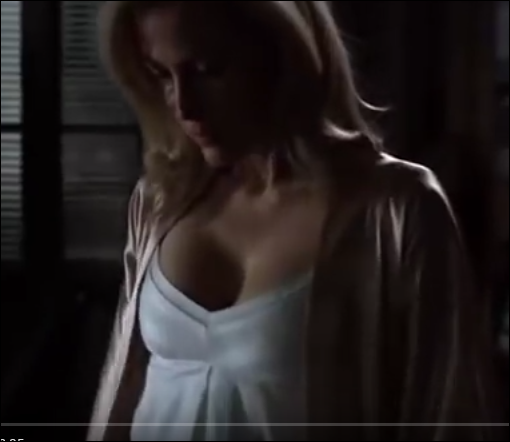





While both Barbarella and Stella’s behavior are in some ways indicative of their times, they also differ in degree of agency . Barbarella with her innocence and multiple partners follows the looser moral climate of the 70’s, and is still more a reflection of the male gaze than an independent woman with agency.
Stella certainly has agency, and is relatable as a multidimensional person, rather than as a reflection of the male gaze. But Stella’s sexual activities play a part in the storyline as well, perhaps softening her “cold logic”, but also rebelling against moral judgements, considering herself her own judge and jury. “Identity is constituted ‘not outside but within representation, and invites us to see film, not as a second-order mirror held up to reflect what already exists, but as that form of representation which is able to constitute us as new kinds of subject, and thereby enable us to discover who we are”.” Stuart Hall cited in Hooks, 2002, p264.” Stella is constantly reflecting upon herself during her jouney, as portrayed by her serious gaze into the mirror, and constant journaling. Stella has made strides forward, but still remains as a sexual object despite her choosing when and where she interacts with men.
Hooks, bell. (2002). “ The Oppositional Gaze: Black Female Spectators,” om Black Looks: Race and Representation, 115-131.
Mulvay, Laura. (1975). “ Visual Pleasure and Narrative Cinema.” Screen 16(3), 6-18.
Photo clips from:
Youtube. “Barbarella in the Excessive Machine.” https://www.youtube.com/watch?v=NX2hTObHfxM
Youtube. “Barbarella di Roger Vadim-The Trailer.” https://www.youtube.com/watch?v=IWhwpnK92Yc&t=46s
Youtube. “The Fall”-Trailer. https://www.youtube.com/watch?v=dyFrBC1rAcg
Netflix: “The Fall” Season 1, Episode 2-Darkness Visible.

